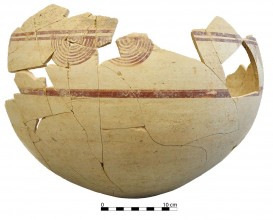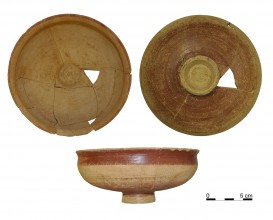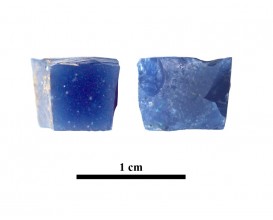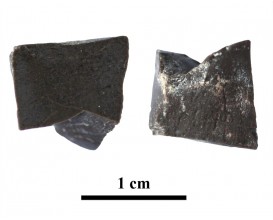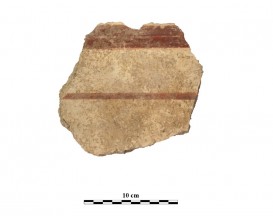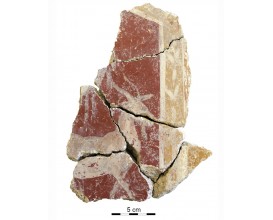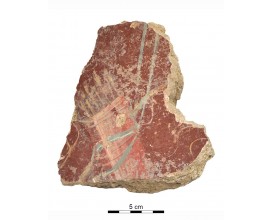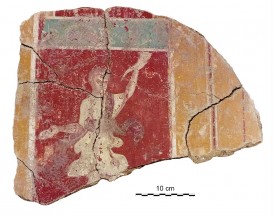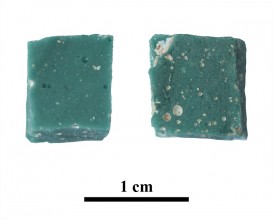Wall fragment decorated with a human figure (Cástulo, Linares, Spain)
The analysis by MRS was not conclusive to identify the origin of the green color, however, the elemental composition obtained by EDXRF indicates a very low concentration of Na characteristic of green earth called celadonite. In this green earth, nodules of Egyptian blue have been identified (both by MRS and by the presence of Cu), which are usually common in the composition of this pigment.
Dimensions
: 19 Centimeters
: 15 Centimeters
Materials
Painting
Temporal
: Roman
: Late 1st-2nd AD
Spatial
: Cástulo
: Linares, Jaén, Spain
: WGS84
Copyrights
Creative Commons - Attribution, Non-Commercial, No Derivatives (BY-NC-ND)
References
Digital Resources
-
 Conjunto Arqueológico de Cástulo-Forum MMX
Conjunto Arqueológico de Cástulo-Forum MMX Creative Commons - Attribution, Non-Commercial, No Derivatives (BY-NC-ND)
Arquiberlab
http://creativecommons.org/licenses/by-nc-nd/3.0/ -
 Conjunto Arqueológico de Cástulo-Forum MMX
Conjunto Arqueológico de Cástulo-Forum MMX Creative Commons - Attribution, Non-Commercial, No Derivatives (BY-NC-ND)
Arquiberlab
http://creativecommons.org/licenses/by-nc-nd/3.0/ -
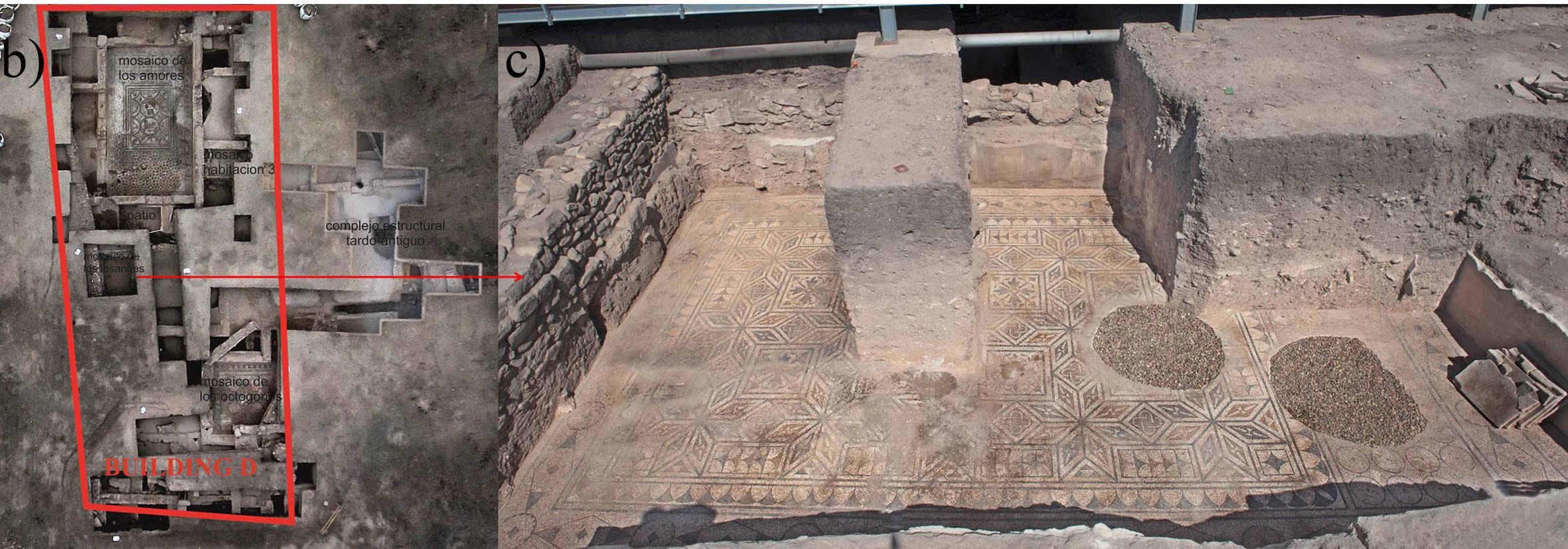 Conjunto Arqueológico de Cástulo-Forum MMX
Conjunto Arqueológico de Cástulo-Forum MMX Creative Commons - Attribution, Non-Commercial, No Derivatives (BY-NC-ND)
Arquiberlab
http://creativecommons.org/licenses/by-nc-nd/3.0/ -
 Instituto Univesitario de investigación en Arqueología Ibérica. Universidad de Jaén
Instituto Univesitario de investigación en Arqueología Ibérica. Universidad de Jaén Creative Commons - Attribution, Non-Commercial, No Derivatives (BY-NC-ND)
Arquiberlab
http://creativecommons.org/licenses/by-nc-nd/3.0/ -
 Instituto Univesitario de investigación en Arqueología Ibérica. Universidad de Jaén
Instituto Univesitario de investigación en Arqueología Ibérica. Universidad de Jaén Creative Commons - Attribution, Non-Commercial, No Derivatives (BY-NC-ND)
Arquiberlab
http://creativecommons.org/licenses/by-nc-nd/3.0/ -
 Instituto Univesitario de investigación en Arqueología Ibérica. Universidad de Jaén
Instituto Univesitario de investigación en Arqueología Ibérica. Universidad de Jaén Creative Commons - Attribution, Non-Commercial, No Derivatives (BY-NC-ND)
Arquiberlab
http://creativecommons.org/licenses/by-nc-nd/3.0/ -
 Instituto Univesitario de investigación en Arqueología Ibérica. Universidad de Jaén
Instituto Univesitario de investigación en Arqueología Ibérica. Universidad de Jaén Creative Commons - Attribution, Non-Commercial, No Derivatives (BY-NC-ND)
Arquiberlab
http://creativecommons.org/licenses/by-nc-nd/3.0/ - Instituto Univesitario de investigación en Arqueología Ibérica. Universidad de Jaén
Creative Commons - Attribution, Non-Commercial, No Derivatives (BY-NC-ND)
Arquiberlab
http://creativecommons.org/licenses/by-nc-nd/3.0/ -
 Instituto Univesitario de investigación en Arqueología Ibérica. Universidad de Jaén
Instituto Univesitario de investigación en Arqueología Ibérica. Universidad de Jaén Creative Commons - Attribution, Non-Commercial, No Derivatives (BY-NC-ND)
Arquiberlab
http://creativecommons.org/licenses/by-nc-nd/3.0/
Activities
Archaeometric analysis Physical-chemical analysis Wall painting. Decoration analysis.
| |
Raman Microscopy Mineral analysis Non destructive. Surface cleaning. Sample pretreatment is not required. Direct measurement. Micro-Raman Spectroscopy (MRS) Renishaw ‘in via’ Reflex Spectrometer coupled with a confocal Leica DM LM microscope (CICT, University of Jaén), equipped with a diode laser (785 nm, 300 mW), argon ion laser (514.5 nm, 25 mW) and a Peltier-cooled CCD detector, calibrated to the 520.5 cm-1 line of silicon. | |
X-Ray Fluorescence Elemental analysis Non destructive. Surface cleaning. Sample pretreatment is not required. Direct measurement. Energy dispersive X-ray fluorescence (EDXRF) An energy dispersive X-ray microfluorescence spectrometer (M4 Tornado, Bruker) (CICT, University of Jaen). This spectrometer is equipped with a microfocus X-ray tube with an Rh anode, a polycapillary lens for X-ray focussing, and a 30-mm2 energy dispersive detector (SDD). The sample chamber incorporates an XYZ motorized stage for sample positioning. A high resolution microscope is used to position the sample on the desired distance from the polycapillary. To increase the sensitivity of the low Z elements, the sample chamber can be brought under vacuum. For the analysis of the samples, a spot size of 25 μm was chosen at an operating X-ray tube voltage of 50 kV and intensity of 600 μA. The tube current was adapted for each sample in order to optimise the detection of X-rays. |



